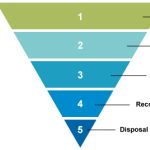Population growth, rural and urban development, lifestyle changes and the consequent change in household consumption patterns have created problems in modern societies. The change of household consumption pattern has changed the waste volume and the waste characteristics or composition.
Factors that influence the quantity of municipal wastes generated include:
- Geographic location
- Season of the year
- Collection frequency
- Use of kitchen waste grinders
- Characteristics of populace
- Extent of salvaging and recycling
- Public attitudes
- Legislation
Typical commercial and industrial unit waste generation rates are:
| Particulars | Quantity |
| Office buildings | 0.5-1.1 kg/ employee *day |
| Restaurants | 0.2-0.8 kg/customer*day |
| Canned and frozen foods | 0.04-0.06 tonnes/ tonne of raw product |
| Printing and publishing | 0.08-0.10 tonnes/ tonne of raw paper |
| Automotive | 0.06-0.8 tonnes/ vehicle produced |
| Petroleum refining | 0.1-0.2 Tonnes/ employee*day |
| Rubber | 0.01-0.3 tonnes/ tonne of raw rubber |
1. Following factors affect Municipal Solid Waste Generation Rates
Source reduction:
The waste reduction may occur through the design, manufacture, and packaging of products with minimum toxic content, the minimum volume of material, and longer useful life. Example: Improve product design to use less materials. Source reduction is the preferred approach.
Reuse:
Reusing product over and over again reduces the waste generation. Example: Using rechargeable batteries, reusable food containers, reusable glass instead of throwaway water bottles, etc.
Recycling:
Recycling is collecting materials that can be broken down and reprocessed to manufacture new items. Example: Household recycling products are – Paper products, Glass, Aluminium, Steel and Some plastics.
2. Effect of public attitudes and legislation on waste generation
Public Attitudes – Significant reduction in the quantities of solid wastes generated occur when and if people are willing to change of their own volition- their habits and lifestyles to conserve natural resources and to reduce the economic burdens associated with the management of solid wastes.
A program of continuing education is essential in bringing about a change in public attitudes.
Legislation Perhaps the most important factor affecting the generation of a certain type of wastes is the existence of local, state, and federal regulations concerning the use of specific materials.
3. Effect of Geographic and physical factors on waste generation
Geographic and physical factors that affect the quantities of waste generated and collected include:
- geographical location: related primarily to the different climate that can influence both the amount generated and collection operation
- season of the year
- frequency of collection
- characteristics of population
- extent of salvage and recyling
- legislation
- public attitude


